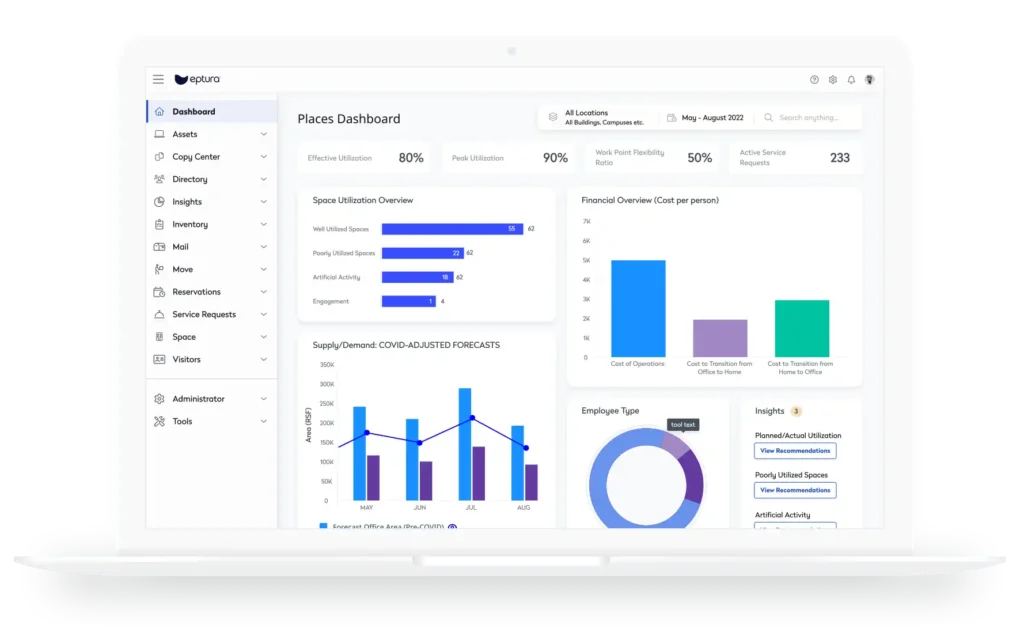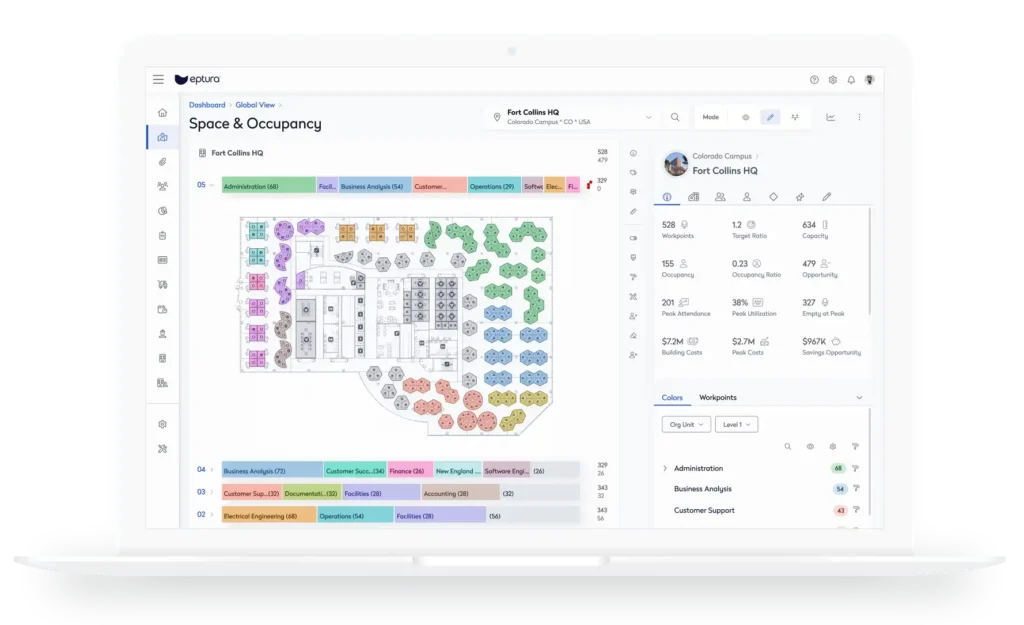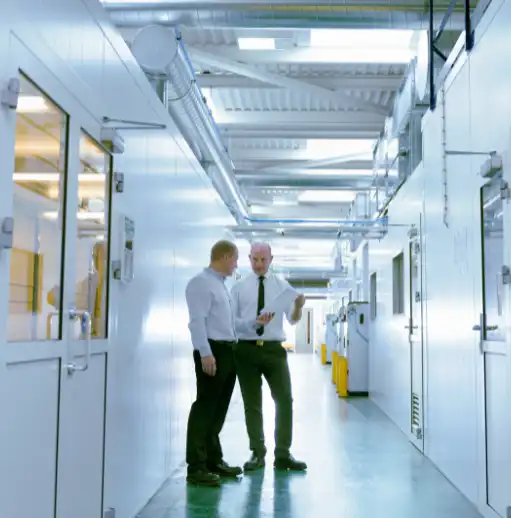
Growth doesn’t always mean buying bigger buildings or signing new leases. For many organizations, expansion can mean supporting more employees, clients, and operations within the same real estate footprint.
By combining workplace optimization, flexible office space strategies, and the latest workplace technology, facility teams can help companies scale without adding square footage.
The result is a smarter, more agile workplace that supports growing success.
Key takeaways
- Growth doesn’t always require more space. Facility managers help organizations expand by maximizing the use of existing real estate through space utilization analysis, hybrid scheduling, and repurposing underused areas
- Flexibility and technology drive efficiency. Strategies like hoteling, desk sharing, and office design, supported by workplace technology, allow companies to adapt quickly while keeping costs under control
- Hybrid work can support both space management and workforce flexibility. Many employees prefer flexible schedules, and adopting hybrid policies can help organizations optimize office space, while maintaining a positive experience
Supporting business expansion without expanding footprint
The assumption that business growth requires more physical space is quickly becoming outdated. Rising real estate costs, the widespread adoption of hybrid work models, and increasing pressure to meet energy efficiency goals are pushing organizations to make better use of the space they already have. In fact, over 40% of companies are redesigning their offices to be more space-efficient, shifting away from individual workstations toward collaborative environments, according to Gartner. The trend reflects a broader move toward smarter space utilization and long-term cost savings.
Facility professionals now focus on:
- Space utilization analysis: Using workplace data to identify underused areas and reconfigure them for higher-value work
- Flexible office space design: Shifting from dedicated desks to activity-based environments that accommodate multiple functions in the same square footage
- Workplace technology adoption: Leveraging workplace solutions and integrated platforms for booking, tracking, and optimizing space in real time
On average, companies only use 50–60% of their available office space on a daily basis, making workplace optimization a critical strategy for supporting growth without expansion.
Strategies for smart scaling
Facility managers oversee space and workplace reources, equipping them to align business growth goals with real-world workplace constraints. By applying the right tools and approaches, they can drive company expansion without the need for additional square footage.
Space planning and workplace optimization
With the right planning tools, facility teams can design adaptable floorplans that evolve as business needs change. In fact, Eptura’s 2025 Workplace Index report reveals that 85% of business leaders plan to use data to inform their workplace strategy, underscoring the shift toward data-driven decisions.
Flexible seating, modular furniture, and shared spaces allow companies to accommodate fluctuating occupancy. Pairing this with space management software gives leaders data-driven insights into occupancy trends and growth opportunities.
Hoteling and desk sharing
Instead of assigning every employee a permanent desk, hoteling models allow staff to reserve workstations when needed. This approach is crucial, as Eptura’s data reveals that 40% of booked desks are never actually used, a phenomenon known as “ghost bookings.”
Hoteling reduces this wasted real estate and enables companies to support larger teams with fewer desks. It also creates a more dynamic office culture, where space adapts to tasks rather than remaining static.
Optimize hybrid work to unlock growth
Hybrid schedules mean fewer employees are in the office at the same time, freeing up square footage for collaboration zones, client areas, or wellness spaces. Reflecting this trend, Eptura’s Workplace Index notes a 23% increase in the use of collaboration spaces year-over-year. Facility managers can use occupancy data to align scheduling with capacity, ensuring flexible office space always matches demand.
Retrofitting and repurposing space
Instead of leasing new floors or even entire buildings, organizations can retrofit existing infrastructure and repurpose underutilized areas. For example, a large, seldom-used boardroom might become a multi-use project hub.
While small meeting rooms for two to four people currently show the highest utilization rate at 36%, many organizations are also finding a shift in how their employees use office space.
With hybrid scheduled, workers often commute in specially for collaboration, team projects, and client-facing work rather than individual tasks. This trend means cimpanies may need to balance the demand for smaller huddle rooms with a growing need for larger, more versatile meeting spaces.
Converting a large room into several smaller ones can be a highly effective strategy. Similarly, storage space could be transformed into innovative labs or wellness rooms.

Facility teams support company expansion in every industry
Every organization wants to grow, but not every company wants, or is able, to increase its physical footprint. Facility teams can support company expansion by ensuring that the space already available is optimized and flexible. From hoteling programs to hybrid scheduling and repurposing underutilized areas, facility managers create workplaces that scale alongside business growth.
Organizations successfully scale by making every square foot smarter, not just by adding more square footage.





